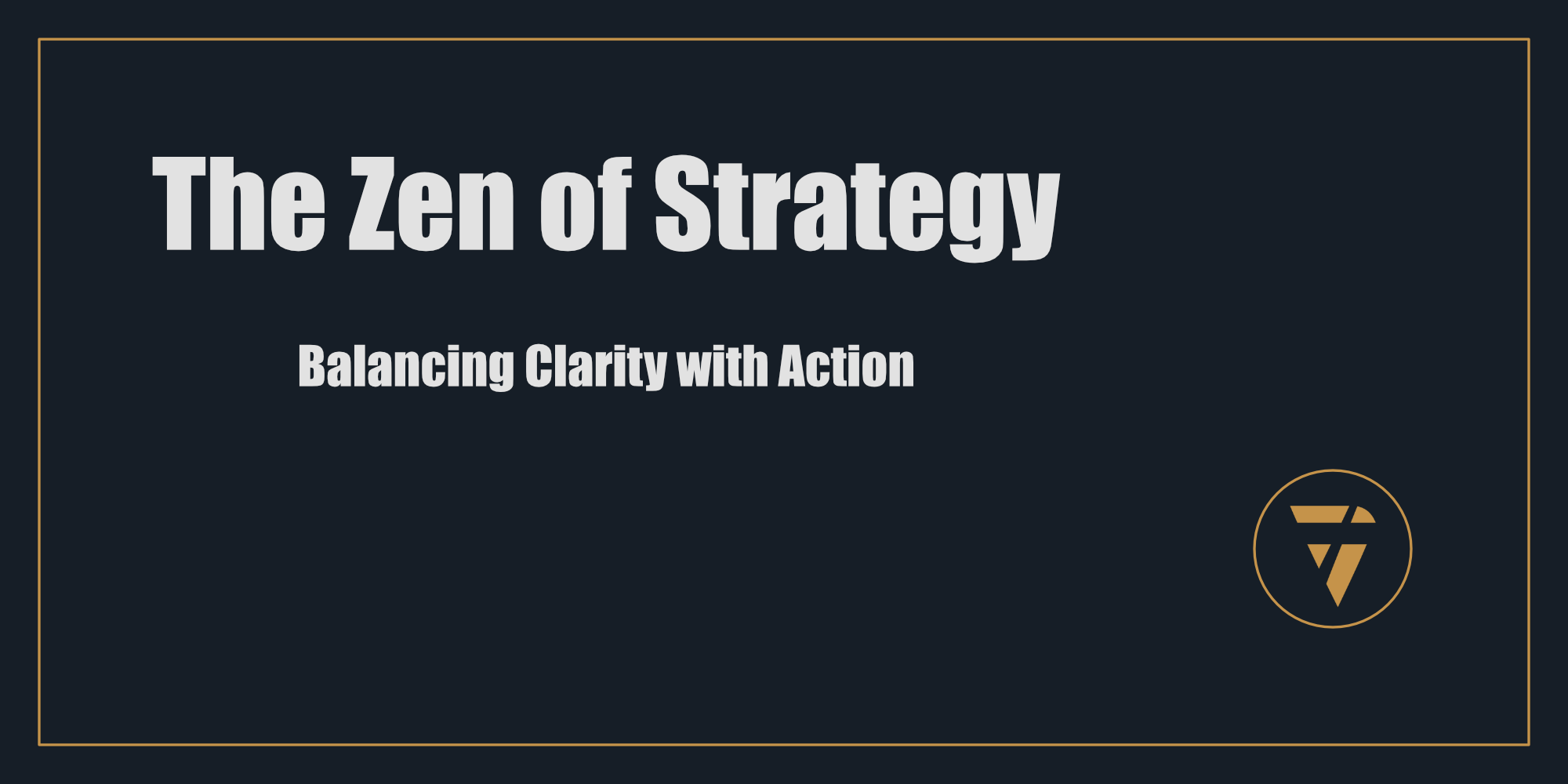The Zen of Strategy
Balancing Clarity with Action

A samurai in battle doesn’t waste energy swinging wildly; each movement is deliberate, purposeful, and aligned with their ultimate goal. In business, as in life, success isn’t just about action, it’s about the clarity that guides it. What if the path to becoming a sharper decision-maker wasn’t doing more, but being more mindful?
The Intersection of Zen and Strategy
Business leaders are often caught in a relentless cycle of decisions. The sheer volume of choices—big and small—can lead to paralysis or impulsivity. Yet, history shows us that the most effective leaders are not those who act the fastest, but those who act with purpose.
Mindfulness, often seen as a practice confined to yoga mats or meditation retreats, is emerging as a critical tool in the boardroom. It’s not about slowing down; it’s about seeing clearly, aligning your actions with your intentions, and executing with precision. This fusion of mindfulness and strategy is The Zen of Strategy.
Balancing clarity with action transforms leadership, decision-making, and overall business performance.
1. Clarity: The Foundation of Effective Strategy
In Zen philosophy, clarity is the cornerstone of effective action. Before the sword is drawn, the samurai has already envisioned the strike. In business, clarity comes from understanding the "why" before rushing into the "what" or "how."
Key Insight:
Most strategic failures stem from a lack of clarity—unfocused goals, poorly defined priorities, or decisions driven by reaction rather than intention.
Practice:
The 3-Question Rule: Before making any major decision, pause to ask:
What is the true goal I’m trying to achieve?
How does this align with my long-term vision?
What’s the smallest, most impactful action I can take now?
2. Action: The Power of Intentional Movement
Zen teaches that action without awareness is wasted energy. In business, this principle is evident in leaders who equate busyness with progress. The Zen of Strategy calls for deliberate, purposeful action—where every step is taken with intent.
Key Insight:
Mindful action isn’t about doing less; it’s about doing what matters most. Leaders who integrate mindfulness into their decision-making process report higher focus, improved team dynamics, and greater overall effectiveness.
Practice:
- The Tactical Pause: Before making a high-stakes decision, take a moment to breathe deeply and ground yourself. This creates a mental “gap” between impulse and action, reducing reactivity.
- The 80/20 Audit: Regularly review your tasks and identify the 20% of actions that drive 80% of your results. Focus on those first.
3. Balancing Clarity and Action in Decision-Making
The greatest leaders seamlessly balance vision and execution, moving fluidly between the two like a seasoned martial artist. This requires cultivating a mindset where clarity informs action, and action sharpens clarity—a continuous feedback loop.
Framework for Zen Decision-Making:
- Observe: Take a step back to assess the full picture without judgment or bias.
- Orient: Clarify the desired outcome and identify the most critical factors.
- Decide: Commit to a course of action that aligns with your core objectives.
- Act: Execute with focus and confidence.
4. The Role of Mindfulness in Strategic Leadership
Mindfulness enhances both clarity and action by training leaders to focus on the present moment without distraction. It reduces decision fatigue, improves emotional regulation, and fosters creativity—all essential qualities for effective strategy.
Mindful Leadership Practices:
- Daily Visualization: Spend five minutes each morning visualizing the outcomes you want to achieve.
- Mindful Meetings: Start each meeting with a moment of silence to align focus and reduce distractions.
- Reflection Time: Dedicate 10 minutes at the end of the day to review decisions made, their impact, and lessons learned.
Action
- Pause to Gain Clarity: Use reflective practices to ensure your decisions align with your core goals.
- Act with Purpose: Prioritize intentional, high-impact actions over sheer busyness.
- Cultivate Mindful Habits: Integrate mindfulness into your daily routines to enhance focus and reduce reactivity.
- Embrace Feedback Loops: Let each action inform your clarity and refine your future strategy.
Are your actions aligned with your vision, or are you caught in a cycle of reaction? What’s one decision you can approach more mindfully today? Share your thoughts! Start a conversation about how mindfulness has shaped your leadership style.
Mindfulness isn’t just a tool for inner peace; it’s a powerful strategy for decisive leadership. Subscribe for more insights, and bring the Zen of Strategy into your organization. Together, we can turn clarity into action and action into transformative results.
Clarity without action is a dream. Action without clarity is chaos. The Zen of Strategy teaches us to balance both, unlocking a path to deliberate, focused success.
This Substack is reader-supported. To receive new posts and support my work, consider becoming a free or paid subscriber.
This is what I’m working on. Tell me what you think, I enjoy the conversation! Subscribe and follow the work in real time.
Thanks!
B
Strategic leaders know: the sharper the clarity, the stronger the action. Pause. Reflect. Execute.
PS -





